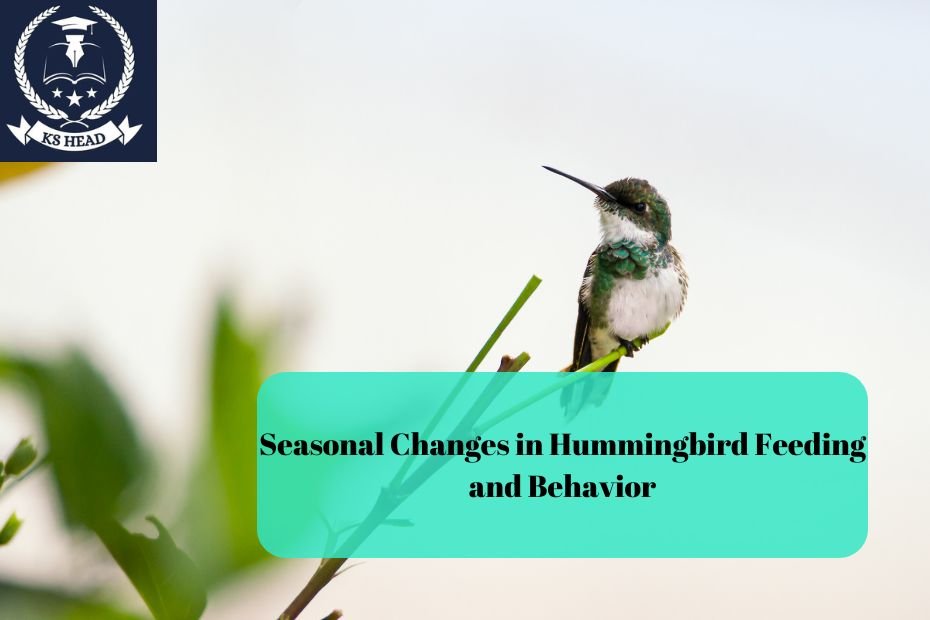Hummingbirds are fascinating creatures known for their vibrant colors, agile flight, and unique behaviors. These tiny birds exhibit remarkable seasonal changes in their feeding habits and behaviors, driven primarily by changes in temperature, food availability, and migration patterns. Understanding these seasonal changes is crucial for birdwatchers, gardeners, and anyone interested in attracting and supporting hummingbirds in their environments. This article explores the different seasonal behaviors of hummingbirds, the factors influencing these changes, and practical tips for providing for them year-round.
1. The Life Cycle of Hummingbirds
Before delving into seasonal changes, it’s essential to understand the life cycle of hummingbirds. Their life stages include:
- Mating: Hummingbirds generally mate in spring. Males perform elaborate aerial displays to attract females.
- Nesting: After mating, females build nests, usually in trees or shrubs, using soft materials such as spider silk, feathers, and plant down.
- Egg Laying: Females lay one to three eggs, depending on the species. These eggs hatch in about two weeks.
- Raising Young: The female cares for the young, feeding them nectar and insects until they fledge, typically within three weeks.
The life cycle’s timing varies by species and location but generally follows the seasonal patterns of spring and summer.
2. Spring: Arrival and Mating
Migration Patterns
Hummingbirds are migratory birds, with many species migrating north to breed during the spring months. The timing of their migration depends on several factors:
- Temperature: Warmer temperatures trigger the arrival of blooming flowers, which serve as a primary food source for hummingbirds.
- Day Length: Longer days signal the birds to migrate northward in search of food and nesting sites.
Feeding Behavior
As hummingbirds return to their breeding grounds in the spring, they exhibit specific feeding behaviors:
- Aggressive Feeding: Males establish territories around feeders and flowers, aggressively defending these areas from rivals. This behavior is particularly pronounced during mating season, as males compete for access to females.
- Nectar Selection: Hummingbirds are attracted to brightly colored flowers, especially red, orange, and pink blooms. During spring, it’s essential to provide nectar-rich plants to support their feeding needs.
Nesting
Once they arrive at their breeding grounds, female hummingbirds begin to build nests. The availability of nesting materials is crucial, and gardens with abundant soft plant fibers, such as cotton or moss, can support this process.
3. Summer: Feeding Frenzy and Raising Young
Increased Activity
Summer is a critical period for hummingbirds as they raise their young. The warmer temperatures and abundance of blooming flowers lead to increased activity:
- Frequent Feeding: Adult hummingbirds must consume large quantities of nectar and insects to meet their energy needs while caring for their young. They can visit hundreds of flowers in a single day, collecting nectar and pollinating plants.
- Territorial Behavior: Male hummingbirds become more territorial as they defend their feeding areas and nests. Their aggressive behavior can be observed as they chase off other males and sometimes even larger birds.
Nesting Success
- Care for Chicks: After hatching, female hummingbirds feed their chicks by regurgitating nectar and insects. This feeding behavior is vital for the growth and development of the young birds.
- Fledging: Once the chicks are old enough, they fledge and leave the nest. This typically occurs in late summer, around six weeks after hatching.
4. Fall: Preparation for Migration
As summer transitions into fall, hummingbirds begin preparing for migration:
Changes in Feeding Habits
- Increased Feeding: In anticipation of migration, hummingbirds increase their feeding to build up fat reserves. This behavior is critical for energy during long flights.
- Selection of Food Sources: During fall, birds may shift their focus to late-blooming flowers and feeders to maximize their energy intake before migration.
Migration Timing
- Environmental Cues: Hummingbirds rely on environmental cues such as decreasing daylight and cooler temperatures to signal when to migrate. This migration typically occurs from late August to early November, depending on the species and region.
- Flocking Behavior: Some species may begin to form small flocks as they prepare for migration, although many hummingbirds tend to migrate alone.
5. Winter: Survival Strategies
In colder climates, hummingbirds face challenges during the winter months. Many species migrate to warmer regions, while others adopt survival strategies to endure the harsh conditions.
Migration
- Long-Distance Travel: Some hummingbirds, such as the Ruby-throated Hummingbird, migrate thousands of miles to Central America for the winter. This migration is often timed with food availability and temperature changes.
- Energy Conservation: During migration, hummingbirds rely on stored fat reserves to fuel their journey. They may stop frequently to feed on nectar and insects along the way.
Wintering Strategies
- Staying Put: In areas with mild winters, some hummingbirds may remain year-round, particularly if feeders are available. It is essential to keep feeders clean and filled with sugar water (avoid red dye) during winter months to support these birds.
- Torpor: To conserve energy during cold nights, hummingbirds enter a state of torpor, where their metabolic rate drops significantly, allowing them to survive periods without food.
6. Attracting Hummingbirds Year-Round
To support hummingbirds throughout the year, consider implementing the following strategies in your garden or backyard:
Plant Selection
- Native Plants: Choose native plants that bloom at different times of the year. This provides a continuous source of nectar and ensures that hummingbirds have access to food throughout their life cycle.
- Colorful Blooms: Opt for flowers in shades of red, orange, and pink, as these colors are particularly attractive to hummingbirds. Examples include trumpet vine, bee balm, and salvia.
Providing Feeders
- Clean Feeders: Regularly clean and refill hummingbird feeders with a simple mixture of one part sugar to four parts water. Avoid using food coloring or additives, as they can harm the birds.
- Placement: Position feeders in shaded areas to prevent the nectar from spoiling quickly. Additionally, placing feeders near flowering plants can attract more hummingbirds.
Creating a Suitable Habitat
- Nest Sites: Encourage nesting by providing trees and shrubs that offer shelter and materials for nest building. Hummingbirds prefer to nest in locations that offer protection from predators and weather.
- Water Sources: Provide shallow water sources for hummingbirds to drink and bathe. Birdbaths with shallow edges or misters can attract these birds.
Conclusion
Hummingbirds are remarkable creatures that exhibit fascinating seasonal changes in feeding and behavior. Understanding these changes can enhance your experience as a birdwatcher and gardener while providing essential support to these tiny, energetic birds.
By planting a diverse array of flowers, providing feeders, and creating suitable habitats, you can attract and support hummingbirds year-round. Whether watching their acrobatic flights in the summer or ensuring they have access to food during migration, your efforts will contribute to the preservation of these beautiful birds and the ecosystems they inhabit.
FAQs
1. What types of flowers attract hummingbirds?
Hummingbirds are attracted to brightly colored flowers, especially red, orange, and pink blooms. Examples include trumpet vine, bee balm, and salvia.
2. When should I put out hummingbird feeders?
Put out hummingbird feeders in early spring, as soon as temperatures begin to warm and the first flowers start blooming. Continue to keep them available until late fall, when hummingbirds migrate.
3. How can I prevent hummingbird feeders from freezing in winter?
To prevent freezing, place feeders in a sunny location or use heater devices specifically designed for bird feeders. Consider bringing feeders indoors at night in particularly cold climates.
4. What is the best sugar-to-water ratio for hummingbird nectar?
The best ratio for hummingbird nectar is one part sugar to four parts water. Boiling the mixture briefly helps to dissolve the sugar and prevents mold growth.
5. Do hummingbirds migrate alone or in flocks?
Hummingbirds typically migrate alone, although some species may form small flocks. Migration timing is influenced by environmental cues like temperature and food availability.

